Infection of human mucosal tissue by Pseudomonas aeruginosa requires sequential and mutually dependent virulence factors and a novel pilus-associated adhesin
- PMID: 20331639
- PMCID: PMC2906647
- DOI: 10.1111/j.1462-5822.2010.01461.x
Infection of human mucosal tissue by Pseudomonas aeruginosa requires sequential and mutually dependent virulence factors and a novel pilus-associated adhesin
Abstract
Tissue damage predisposes humans to life-threatening disseminating infection by the opportunistic pathogen Pseudomonas aeruginosa. Bacterial adherence to host tissue is a critical first step in this infection process. It is well established that P. aeruginosa attachment to host cells involves type IV pili (TFP), which are retractile surface fibres. The molecular details of attachment and the identity of the bacterial adhesin and host receptor remain controversial. Using a mucosal epithelium model system derived from primary human tissue, we show that the pilus-associated protein PilY1 is required for bacterial adherence. We establish that P. aeruginosa preferentially binds to exposed basolateral host cell surfaces, providing a mechanistic explanation for opportunistic infection of damaged tissue. Further, we demonstrate that invasion and fulminant infection of intact host tissue requires the coordinated and mutually dependent action of multiple bacterial factors, including pilus fibre retraction and the host cell intoxication system, termed type III secretion. Our findings offer new and important insights into the complex interactions between a pathogen and its human host and provide compelling evidence that PilY1 serves as the principal P. aeruginosa adhesin for human tissue and that it specifically recognizes a host receptor localized or enriched on basolateral epithelial cell surfaces.
Figures
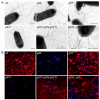

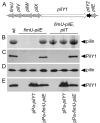

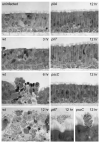
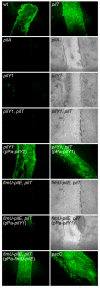
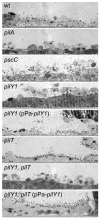

Similar articles
-
Pseudomonas aeruginosa minor pilins prime type IVa pilus assembly and promote surface display of the PilY1 adhesin.J Biol Chem. 2015 Jan 2;290(1):601-11. doi: 10.1074/jbc.M114.616904. Epub 2014 Nov 11. J Biol Chem. 2015. PMID: 25389296 Free PMC article.
-
The interaction of Pseudomonas aeruginosa PAK with human and animal respiratory tract cell lines.FEMS Microbiol Lett. 2004 Sep 1;238(1):49-55. doi: 10.1016/j.femsle.2004.07.016. FEMS Microbiol Lett. 2004. PMID: 15336402
-
Global Regulatory Pathways Converge To Control Expression of Pseudomonas aeruginosa Type IV Pili.mBio. 2022 Feb 22;13(1):e0369621. doi: 10.1128/mbio.03696-21. Epub 2022 Jan 25. mBio. 2022. PMID: 35073734 Free PMC article.
-
The type-4 pilus is the major virulence-associated adhesin of Pseudomonas aeruginosa--a review.Gene. 1997 Jun 11;192(1):99-108. doi: 10.1016/s0378-1119(97)00116-9. Gene. 1997. PMID: 9224879 Review.
-
Adhesins and receptors of Pseudomonas aeruginosa associated with infection of the respiratory tract.Microb Pathog. 1992 Oct;13(4):251-60. doi: 10.1016/0882-4010(92)90035-m. Microb Pathog. 1992. PMID: 1363702 Review.
Cited by
-
Molecular Mechanisms Involved in Pseudomonas aeruginosa Bacteremia.Adv Exp Med Biol. 2022;1386:325-345. doi: 10.1007/978-3-031-08491-1_12. Adv Exp Med Biol. 2022. PMID: 36258078 Review.
-
Basis for the essentiality of H-NS family members in Pseudomonas aeruginosa.J Bacteriol. 2012 Sep;194(18):5101-9. doi: 10.1128/JB.00932-12. Epub 2012 Jul 20. J Bacteriol. 2012. PMID: 22821971 Free PMC article.
-
Subversion of mucosal barrier polarity by pseudomonas aeruginosa.Front Microbiol. 2011 May 26;2:114. doi: 10.3389/fmicb.2011.00114. eCollection 2011. Front Microbiol. 2011. PMID: 21747810 Free PMC article.
-
Surface Sensing for Biofilm Formation in Pseudomonas aeruginosa.Front Microbiol. 2018 Jan 9;8:2671. doi: 10.3389/fmicb.2017.02671. eCollection 2017. Front Microbiol. 2018. PMID: 29375533 Free PMC article. Review.
-
Host Mucin Is Exploited by Pseudomonas aeruginosa To Provide Monosaccharides Required for a Successful Infection.mBio. 2020 Mar 3;11(2):e00060-20. doi: 10.1128/mBio.00060-20. mBio. 2020. PMID: 32127446 Free PMC article.
References
-
- Alm RA, Hallinan JP, Watson AA, Mattick JS. Fimbrial biogenesis genes of Pseudomonas aeruginosa: pilW and pilX increase the similarity of type 4 fimbriae to the GSP protein-secretion systems and pilY1 encodes a gonococcal PilC homologue. Mol Microbiol. 1996;22:161–173. - PubMed
-
- Alm RA, Mattick JS. Genes involved in the biogenesis and function of type-4 fimbriae in Pseudomonas aeruginosa. Gene. 1997;192:89–98. - PubMed
Publication types
MeSH terms
Substances
Grants and funding
LinkOut - more resources
Full Text Sources

